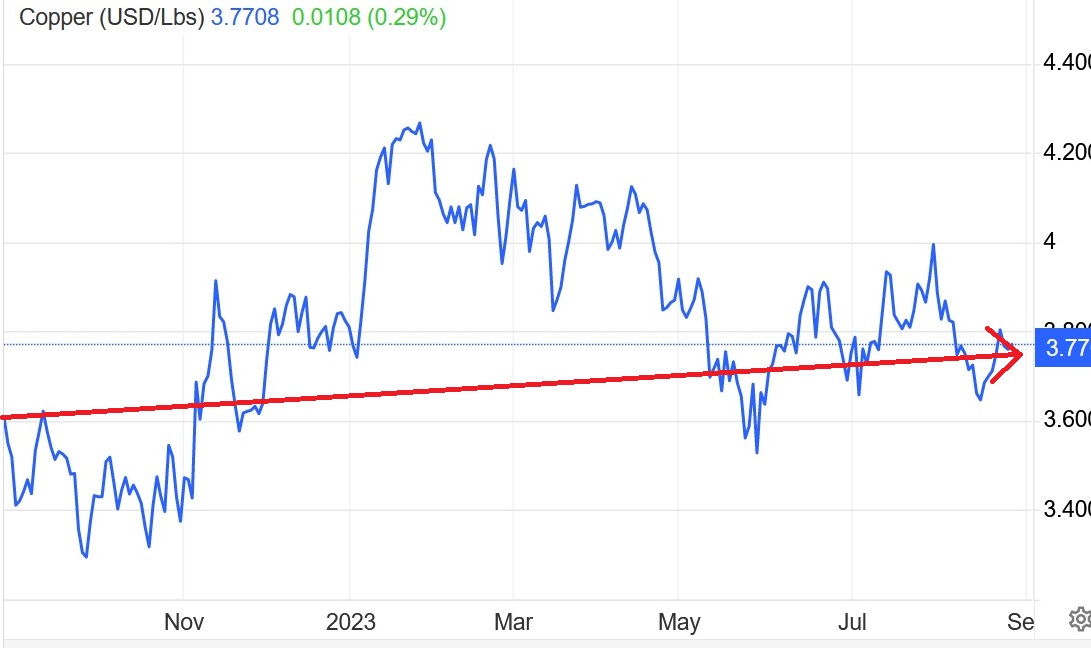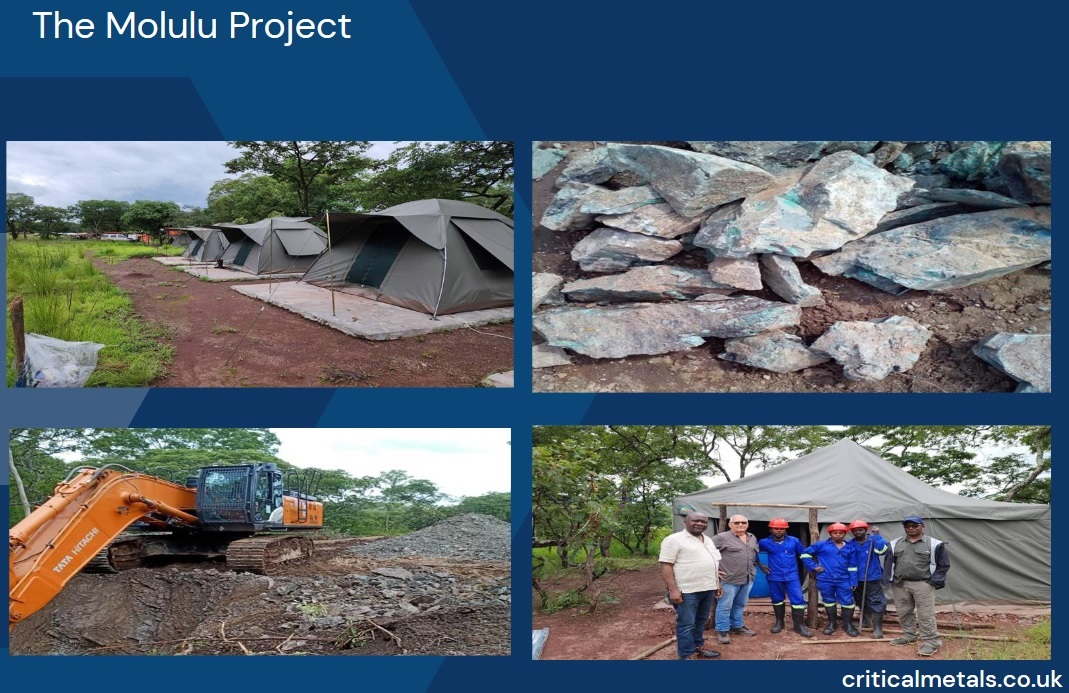Critical Metals Molulu Project to Prioritize Higher-Grade Copper Sulphide Ore
Copper prices have been surprisingly resilient in 2023 despite a China slowdown. This is partly because global copper grades are declining putting downward pressure on supply. It is also because there is a new demand from electric vehicles, charging infrastructure and renewable energy (solar and wind). In mining they say grade is “king” and it is very true. High-grade mines tend to have lower costs and hence greater margins making them priced possessions. Today’s company is shifting strategy to focus on high-grade copper sulphide mining with the potential to “increase profitability by orders of magnitude.”
One year Copper price chart showing copper prices remain resilient (higher than where they were a year ago despite a China slowdown)

Source: Trading Economics
Critical Metals PLC update
Critical Metals PLC (LSE: CRTM) owns 100% of Madini Occidental Limited, which holds an indirect 70% interest in the Molulu copper-cobalt Project in the Democratic Republic of Congo (“DRC”). The Project was previously mined by artisanal miners from 4 pits. The Project was forecast to produce an initial 120,000 tonnes pa of copper oxide ore after re-commencing production in January 2023. As of May 2023, Critical Metals has mined over 6,500 tonnes of oxide ore at an average grade of 3%; however the Company is now switching focus to much higher grade sulphide ore at their Molulu Project.
Sulphide ore in this region (Katanga DRC) is known to have some of the highest grades of copper and cobalt globally as seen with renowned Glencore PLC (LSE: GLEN | OTC: GLCNF) and CMOC Group Limited’s (HKSE: 3993 | SHE: 603993 | OTC: CMCLF) DRC Mines in the Katanga region.
The Molulu Project (Critical Metals owns an indirect 70% interest)

Source: Critical Metals company presentation
Critical Metals Molulu Project will continue mining copper oxide ore but will shift focus to finding higher grade copper sulphide ore
In May 2023 Critical Metals announced to the market their plan to focus on the ‘higher grade sulphide zones‘ at the Molulu Project. This is because these zones have grades as high as 8.36% copper. Most global copper miners are operating with grades below 1% copper. Critical Metals commented on the change of strategy stating:
“After surveying the Molulu copper grades and market, the technical team have decided to focus mining on the high-grade sulphide copper ore……Mining focus accelerating to the high-grade sulphide zones – high grade ore samples above 8.3% copper……..Due to the much higher-grade sulphide copper ore, mining the sulphide zones has the potential to increase profitability by orders of magnitude above the oxide only mining.“
Critical Metals will continue mining the oxide ore, but will drill the sulphide areas to create a JORC report (resource).
Mapping and geophysics programmes at Molulu has reconfirmed large copper and cobalt potential.
In the most recent May 2023 Company update, Critical Metals confirmed that they had identified two new anomalies by the geophysics analysis on the Molulu Project. Furthermore, road rehabilitation is complete, bridge building has begun, high-grade sulphide open pits are beginning to drain, and drilling was set to begin in mid-June. The Company also mentioned that first Molulu oxide ore sales are expected late June.
Fast forward to now (late August) and we should expect some drill results to be released soon. Hopefully with some very high grades.
In other news, Critical Metals successfully raised £600,000 at a small premium. The proceeds of which will be used for geological due diligence on potential acquisition opportunities, one of which has been identified outside of the DRC. Consulting geologists have already visited this potential opportunity and feedback is expected shortly.
Closing remarks
Critical Metals is making all the right moves in 2023 and a resilient copper price is also helping. First oxide ore sales and revenue from Molulu are encouraging as is the potential exploration upside as they drill for copper sulphide ore at Molulu. The prospect of a new acquisition outside of the DRC is also exciting. There are numerous catalysts in the year ahead with the potential to shift the stock price higher, especially given the current market cap is only GBP £14 million.
Stay tuned.